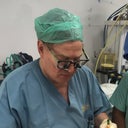Do you place drains after a full facelift? My surgeon does not. Just places a wrap that comes off the next day. Thoughts on this?
Answers (42)
From board-certified doctors and trusted medical professionals
More Facelift Questions
See all Facelift Q&AWE SEND PRETTY
EMAILS
What’s trending? Who’s turning heads? Which TikTok myths need busting? We’ve got you. No fluff, no gatekeeping—just real talk. Get our free, unfiltered newsletter.









